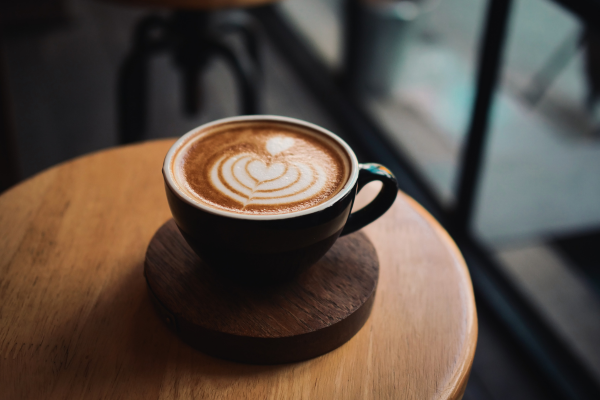Brewing coffee might seem simple — hot water, ground beans, done. But crafting a truly satisfying cup requires more than that. Many people make small mistakes every day that drastically affect the taste of their coffee. If you’ve ever wondered why your coffee doesn’t taste as rich, smooth, or aromatic as you expect, this guide will help you fix it.
Let’s explore the 10 most common coffee brewing mistakes — and how to avoid them.
1. Using Stale Coffee Beans
Freshness is everything in coffee. Once beans are roasted, they start to lose their flavor and aroma. Using stale coffee is like trying to enjoy flat soda — the base is there, but the sparkle is gone.
What to do instead:
- Always check the roast date (not the expiration date).
- Use your beans within 2–4 weeks of roasting.
- Buy smaller batches of whole beans and grind only what you need.
2. Grinding Coffee Too Early
Ground coffee loses its flavor much faster than whole beans. If you’re buying pre-ground coffee or grinding days in advance, you’re missing out on a huge part of the flavor experience.
The fix:
- Invest in a burr grinder and grind your coffee just before brewing.
- Match your grind size to the brewing method (more on that below).
3. Using the Wrong Grind Size
Each brewing method requires a specific grind size to extract the right amount of flavor. Using the wrong size can result in bitter or weak coffee.
Common grind size mistakes:
- Espresso with too coarse a grind = watery shot
- French press with too fine a grind = over-extracted, bitter brew
Quick guide:
- Espresso: Fine grind
- Pour-over: Medium-fine
- Drip machine: Medium
- French press: Coarse
4. Using Tap Water Without Filtering
Water makes up over 98% of a cup of coffee. If you’re using unfiltered tap water, you might be adding unwanted tastes from chlorine, minerals, or even old pipes.
Best practice:
- Use filtered or bottled water if your tap water has a noticeable taste.
- Avoid distilled water — coffee needs some minerals for proper extraction.
5. Ignoring the Water Temperature
Too hot and you’ll burn the coffee. Too cool and you’ll under-extract, making it sour or flat.
Ideal temperature:
Between 195°F and 205°F (90°C to 96°C)
Tip:
If you don’t have a thermometer, let boiling water sit for 30 seconds before pouring.
6. Getting the Coffee-to-Water Ratio Wrong
Too much coffee? It’s overpowering. Too little? It tastes like flavored water. This is one of the most overlooked factors in home brewing.
Recommended ratio:
- 1:15 to 1:18 (1 gram of coffee for every 15–18 grams of water)
- That’s about 2 tablespoons per 6 oz cup
Best solution:
Use a kitchen scale for consistent, accurate results.
7. Not Cleaning Your Equipment
Old coffee oils and residue can make your next cup taste bitter or rancid. Whether you’re using a French press, a drip machine, or an espresso machine, buildup happens over time.
Cleaning checklist:
- Rinse removable parts after every use
- Deep-clean weekly with warm water and mild soap
- Descale every few months if you use a machine
8. Rushing the Brewing Process
Coffee takes time. Rushing it means poor extraction — and poor flavor.
Mistakes include:
- Not letting coffee “bloom” in pour-over methods
- Cutting steep time short in a French press
- Pouring water too quickly
Be patient. Great coffee rewards attention and care.
9. Not Preheating Your Equipment
Pouring hot coffee into a cold mug or using a cold French press cools down the coffee too quickly, impacting taste and mouthfeel.
Simple fix:
- Preheat your mug, French press, and even your pour-over dripper with hot water before brewing.
10. Expecting Great Coffee from Cheap Beans
Even with perfect technique, low-quality beans won’t produce a great cup. Mass-produced, overly roasted supermarket coffee is often stale or poorly handled.
What to look for:
- Buy from local roasters or specialty stores
- Check origin, roast date, and roast level
- Experiment with different single-origin coffees to find what you love
Bonus Tip: Don’t Be Afraid to Experiment
Coffee brewing is both a science and an art. Once you get the basics down, start experimenting:
- Try different roasts and origins
- Play with ratios and grind sizes
- Test new brewing methods (aeropress, moka pot, cold brew)
Each change you make will teach you something new about your taste preferences — and get you closer to your ideal cup.
Final Thoughts: Small Tweaks, Big Flavor
Avoiding these common coffee mistakes can completely transform your daily cup. You don’t need expensive equipment or barista-level skills — just attention to detail and a willingness to tweak your routine.
Start with fresh beans, clean equipment, the right grind, and the correct water temperature. Soon, your homemade coffee will rival even the best coffee.

